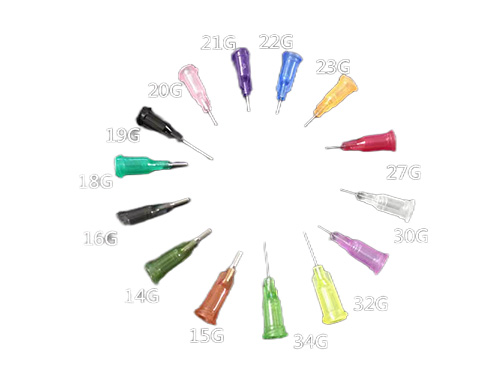Global Seed Tray Seeder Market Analysis: Emerging Markets and Technology Trends
2024-12-31 21:21:24
In modern agriculture, seed tray seeders have become crucial tools for improving planting efficiency, ensuring crop germination rates, and saving labor. With technological advancements and a growing demand for automation, the global seed tray seeder market is rapidly expanding. These machines are not only widely used on mechanized farms in developed countries but are also showing great development potential in emerging markets. This article will analyze the current state of the global seed tray seeder market, emerging market demands, and technological trends, helping you understand the opportunities and challenges in this market.
Current State of the Seed Tray Seeder Market
Increasing Market Demand
With the global population continuously growing, land resources becoming increasingly scarce, sustainable development gaining prominence, and advancements in agricultural technology, the demand for high-efficiency planting equipment is increasing. Seed tray seeders not only speed up planting, ensure uniform seed distribution, but also reduce seed waste, ultimately improving overall crop yield.
Developed countries like the United States and Europe have already widely adopted smart seed tray seeders, while in Asia, South America, and Africa, this equipment is gradually gaining popularity.
Technological Upgrades and Automation Development
Currently, the global seed tray seeder market is gradually moving toward automation, intelligence, and precision.
Modern seed tray seeders integrate smart control systems, automated sensors, data analysis technologies, and more. For example, smart planters can automatically adjust planting density, depth, and spacing according to the growth needs of seeds, ensuring optimal planting results.
Emerging Market Demands and Opportunities
Asian Market: Growing Technological Demand
In Asia, especially in countries like China, India, and Vietnam, the demand for seed tray seeders is rapidly increasing. Agricultural industries in these countries are gradually transitioning to mechanization and automation.
Government subsidies for modern agriculture, the introduction of advanced technologies, and initiatives promoting sustainable development are all creating significant opportunities for the seed tray seeder market. Farmers are increasingly focusing on equipment efficiency and long-term operational costs.
African Market: High Demand and Technological Shortages
Africa faces significant challenges in agricultural production, such as labor shortages, low technological skills, and high equipment costs.
As a result, the African market requires cost-effective, practical seed tray seeders. These machines typically need robust designs, user-friendly interfaces, and low maintenance costs.
South American Market: Accelerating Automation Adoption
In South America, especially in agricultural powerhouses like Brazil, automation technology is gradually becoming more widespread.
Local farmers focus on the efficiency and reliability of equipment. Automated seed tray seeders significantly boost planting efficiency, reduce labor costs, and enhance overall agricultural productivity.
Technological Trends: Future Development Directions
1. Integration of Artificial Intelligence and Data Analysis
Modern seed tray seeders are starting to incorporate artificial intelligence and data analysis systems. These technologies optimize planting parameters automatically based on historical data and real-time monitoring.
For example, AI algorithms can predict optimal planting density, timing, and spacing, which improves germination rates and reduces seed waste.
2. Internet of Things (IoT) Technology and Remote Control
The application of IoT technology enables seed tray seeders to be remotely monitored and controlled.
Farmers can view planting data, adjust device parameters, and operate the system remotely via their phones or computers. This greatly enhances operational convenience and management efficiency.
3. Modular Design and Multi-functional Integration
The modular design of modern seed tray seeders makes equipment more flexible and easier to maintain.
Modular components can be split and combined according to specific needs, adapting to different scales and types of agricultural operations. Additionally, integrated multi-functional modules, such as irrigation, fertilization, and harvesting, further improve agricultural efficiency.
4. Eco-friendly and Sustainable Technologies
Seed tray seeders are also focusing on eco-friendly and sustainable development.
Using recyclable materials, reducing fertilizer and water waste, and employing energy-saving batteries and solar technologies have become market trends.
These technologies not only reduce production costs but also align with the global principles of sustainable agricultural development.
Challenges and Strategies for Solutions
High Costs and Maintenance Complexity
High-tech equipment often comes with high costs, particularly in automation and smart designs.
Solution: Promote modular designs, standardize production, and utilize mass production to lower costs, while providing customized maintenance services and long-term technical support.
Market Education and Technology Adoption
Many farmers in emerging markets are not familiar with the operation and maintenance of high-end seed tray seeders.
Solution: Provide training courses, operation manuals, online tutorials, and collaborate with local partners to offer on-site technical guidance.
Adaptability and Compatibility Issues
Different regions have variations in climate, soil types, and crop types, which present higher requirements for planter design.
Solution: Offer customized designs based on regional needs, ensuring the equipment operates reliably under various conditions.
Future Outlook
With continuous technological progress and changes in the global agricultural market, seed tray seeders will evolve toward greater efficiency, intelligence, and sustainability.
Technologies like IoT, big data, and artificial intelligence will integrate more deeply with seed tray seeders, enhancing the automation and intelligence levels of overall agricultural production.
Through cross-sector collaboration and standardized production, it is possible to further reduce equipment costs while improving stability and reliability.
Conclusion
The global seed tray seeder market is rapidly expanding, showcasing significant potential from developed countries to emerging markets. With technological innovation, market adaptability, modular design, and sustainable development concepts, this market is poised for a prosperous future.
If you wish to introduce more efficient and intelligent planting equipment in modern agriculture, contact us. We offer professional, customized seed tray seeder solutions to help you achieve higher yield, eco-friendly practices, and sustainable agricultural goals.

It adopts electrical integration and can be started by pressing the fully automatic button ...

The XP750 seeder has stable performance, excellent product quality, simple and convenient o...

It adopts electrical integration and can be started by pressing the fully automatic button ...

Needle list Seed nozzle model Different models Sowing types are different...



